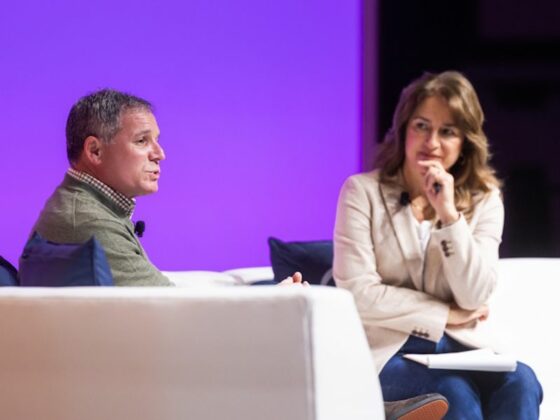Josiah: Before we started recording, we talked a bit privately about your philosophy of buying versus building technology. Can you tell me a little bit more about that? What has led you to approach technology that way?
Kari Anna: I don’t really have a philosophy of buying versus building, but it’s more like don’t build something that you don’t have to build. There’s something that’s already built better than you. So we’re trying to get that mix right all the time. I mean, we do have a great team of fantastic developers as well, but you know, like standardized systems like accounting, ERP, my systems, even PMSs, there are a lot of great companies out there that have been doing this for a long time. And they are tech companies and we are a hospitality company. I know everyone says that everyone is becoming a tech company, but come on, we’re not. We’re not a tech company. We don’t think tech fast. We think hospitality fast, and then we use technology, and that’s fine. So we have obviously a philosophy of thinking that we have to identify and find the best partners out there for tech systems. And then what we think that we can actually do this in another way. We can twist this, we can build this experience or that. part of our whole architecture and tech stack better if we do that ourselves or it will fit our business better if we do this ourselves, then we go in and say like, okay, we’re going to own this part of the technology or this part we’re going to build.

Josiah: That makes sense. I’m curious how you think about evaluating technology because if you look at any one of these solutions, if you take property management systems, for example, there have to be more than 100 providers of property management solutions. How do you think about evaluating a category or a solution?
Kari Anna: It’s really hard, of course. I mean, you’ve got the classic sort of RFPs and RFIs and blah, blah, blah, and you go out to a broad horizon of vendors, which we obviously have done with a lot of the vendors and partners that we’ve chosen now. We didn’t just accidentally land on Mews when we decided what PMS to move over to. But I think it’s very different to evaluate a tech vendor now than what it was because you really have to try to get a hunch on their ability to innovate and keep up with the shift of technologies. Whereas like 10 or 15 years ago, you would evaluate the product that they had, and that was the product that they had. Then maybe you would do some upgrades or whatever, but you sort of, you know, you had a process, and you chose a product, and then that’s where you are. Now you’re actually choosing a partner more than a product, I think. So you have to choose a partner that you think will be able to scale their business and product to the shift of technologies and understand your business. So it’s almost like you’re evaluating people and partnerships more than the actual technology. Though, of course, the technical platform is a very big part of it. At least that’s how I like to think about it. And I think also in a world where you can do whatever you want to with this kind of technology and integration, it is the culture and the chemistry between you and your partner that will define if you get somewhere or not.
Josiah: Do you still do RFPs?
Kari Anna: Yeah, we do, but not for everything that we do. We also, I mean, now that we’re actually, we migrated, I think, around 150 hotels last year to the new tech stacks, and we have around 100 left, but we’re doing five to six hotels a week. So it’s crazy, really. I don’t know how they do it, but they do it. The teams are fantastic. amazing people. But now that we’ve done that, we will be able in a much larger way also to evaluate in smaller percentage of the company, which is part of the strategy and why we want to use more microservices and all the modern technology so that we can go in and say, instead of doing a large RFP and then try to make a draft and that old sort of waterfall and methodology to how we’re going to use the system that we’ve built or bought. more bought than built, actually. We can implement it in three hotels, and if it doesn’t work, we’ll take it out again. I think it’s one of the wonders about getting over to the new tech stack that it’s hard to explain to everyone who is working in the various positions. But if you want to look at it from being flexible, having speed, being able to innovate and move fast, that’s where you want to get. You want to be able to try fast, fail fast, and move fast instead of doing RFPs or let’s face it, at the end of it, then they’re a theory. You don’t know if it’s going to work until you actually try it out.
Josiah: You touched on a lot of different elements of finding a right partner. You talk about people and where they’re going. What are some criteria that come to mind, or how do you approach that process? Are there meetings with these teams? What are you looking for? What are you trying to understand as you’re assessing this?
Kari Anna: That would be a bit different also, of course, but it’s a lot about meetings and figuring out if their set of values, you know, the way that they talk to you, the way they treat their people, the way they are rated by various partners. Obviously, in industry magazines and concepts as well, you have to observe these partners over time to see if they actually get who you are and if they want to innovate and want to move together with you. For some of them, I mean, they’re public companies and they have to do funding as well. So you can obviously measure that if they are that, if they’re getting funding, if other people are taking interest, if investors want to invest in them, that is a very good parameter to say that, okay, well, there’s something here because a lot of people are hoping to make a lot of money on this company, then they must be doing something right. But ultimately, at the end of the day, you can track, and you can do analytics, and you can do everything, all of that. But it’s still a tiny bit. It’s, I think, maybe experience. I don’t really believe in gut feeling. I believe gut feelings are basically experiences that you can’t really place into boxes. You’re not sure what it is, but you can see it and feel it because you’ve done this before and you have to mix it with that as well and take a little risk.
Josiah: Makes sense. So let’s say you go through this whole evaluation process, you find the right partners, you buy the technology, sign the contract, then comes the time when the rubber hits the road and you start actually implementing. You are going through this process right now with your teams. You mentioned doing this changeover of technology, five or six hotels a week at a very rapid pace. How do you think about change management? Because that can be very, very difficult. What have you found to be useful and effective in getting people to not only install it correctly but also change workflows so that they’re getting the most out of this tech?
Kari Anna: Listening to them, I think, is the most effective because, I mean, we were actually joking about this a bit earlier today because we were talking about change management. And it is, to be fair, I mean, the new processes and systems, I think that I would say that they’re only 30% tech. It’s 70% change management and people. And it’s really hard to explain the importance of change management and what will hit you to someone who hasn’t done it before. So we were joking about how, for me, like, since I’ve accidentally done this my entire life, I know that, yeah, shit will hit the fan. It will be really horrible for a while. Then we’ll move over to this phase. Then we’ll move over to this phase. Then we’ll go back to that phase and we’ll have to try again. But explaining that to someone who hasn’t done it before, I think it’s almost impossible because it’s so theoretical. So I think when we work with change management, it’s a lot of being patient, being friendly, being nice, taking people’s concerns seriously, even if they to you feel like a stupid concern and you know that isn’t really a problem, it will still be a problem to the person you’re talking to. So I think it’s a bit pull, push, adjust on the way, always be nice, always take time to speak to people, find out who are the worried people. How can I help them get aboard? Who are the really positive ones that want to try and change and run along? How can I get them to help the others? And how do we all combine these people? Also, I think it’s one of the most useful things I learned when I started project management is that there is no template to do project management that fits every project. Every project is different because the people involved in the project are different people. So adapt to the people that you’re actually working with.
Josiah: I mean, just to follow up on that, I’m thinking of one specific piece of technology, like a point of sales solution in a restaurant, right? I’m curious about what you found useful in helping your teams understand the people that you’re serving and using examples of restaurant technology. we could use another example, but I’m curious if you kind of have them observe what a workflow looks like or something like that.
Kari Anna: It’s a yes and no, actually. I mean, the people that are out there rolling it out, they come from the places where they’re rolling out. I mean, our system owner for POS knows the industry from the other side because he’s worked there for ages. And I think that is crucial because you don’t want something, someone purely technical to own a system and describe what you want out of it if they don’t understand what it’s like to be there. Like you’re saying in the restaurant, to be there when you know it’s a rush, and there’s a lot of customers, and you’re out there on the floor. And no, you cannot go back to your computer to check this because there is no computer. So I think to understand the people that we’re working with, we have to continue to get people from the actual industry or a system department that we’re going to change. into tech to help explain to the technicians, what do we want to achieve? Why do we want to do this? And then again, combine that, get the technicians out there because they will observe things that you can’t really identify if you’re a non-technician. The amount of times where I’ve had someone say like, oh my God, how are you doing this? We could solve it like this. It’s a combination of putting, I think, business and technology together.








